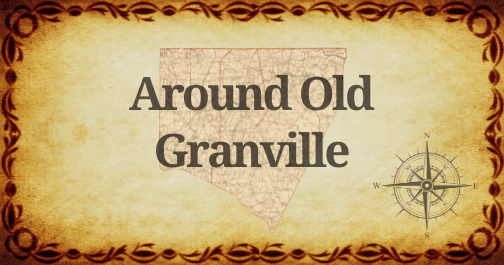Anyone traveling the area known as Old Granville – that includes present-day Vance, Granville, Warren and Franklin counties – is bound to notice some old churches. Indeed, Vance County is home to St. John’s Episcopal Church in Williamsboro.
The existing building on Stagecoach Road is the oldest frame church in the state, but local historian Mark Pace said it wasn’t given its name until 1825. Before that, it was known as Nut Bush Chapel, and it was not affiliated with any one denomination.
On top of that, it’s not even the original building – that was located about a mile away from the present site.
Those are just a few of the details about one particular church in one particular area of the original Granville County. Pace, North Carolina Room Specialist at Thornton Library in Oxford, no doubt has collected lots of details about lots of churches with deep roots in the area.
Whether it’s Reedy Creek in the far eastern corner of present-day Warren County or Grassy Creek Presbyterian Church along Highway 15 between Oxford and Stovall, religion and the churches built to accommodate the different denominations have been instrumental throughout the history of the area.
The original three denominations, Pace noted, were the Anglicans (which became Episcopal after the Revolution), the Presbyterians and the Baptists.
“All three of them were here by the late 1740’s,” Pace said on Thursday’s segment of Around Old Granville, but added that it’s hard to pin down exact dates.
Circuit riders would come down from Virginia to hold camp meetings and perform mass baptisms. “And then they’d move on,” he said.
Reedy Creek Baptist Church was established in 1743 or 1744, he said, and the Grassy Creek Presbyterian Church in the Gela community was formed by 1750 or 1752.
It wasn’t until 1772 that the current St. John’s Church in Williamsboro was constructed.
“It probably really is Vance county’s most valued relic,” Pace said of the small white church with burgundy shutters.
The Anglicans and the Presbyterians, though smaller in number, were generally more influential in pre-Revolution society, Pace said.
But the Baptists consisted of the working class and they were more of them, he noted.
Arriving a little later on the scene in this area were the Methodists, Pace said. Not only are there plenty of Methodist churches spread out across the area today, but there’s a whole community named for the two men responsible for establishing Methodism in America.
Any guesses?
Thomas Coke and Francis Asbury were sent by John Wesley to spread the word about Methodism to the colonies, North Carolina among them. That’s right – Cokesbury.
Before the Civil War, enslaved people, free Blacks and Whites all worshipped together, he said and enslaved people “could pick what church they wanted to be a member of,” Pace said.
There were numerous Black preachers in the area, among them John Chavis, who was active as a Presbyterian preacher between 1785 and 1835.
Over the years, original church buildings have been replaced for one reason or another, so their congregations are older than the buildings in which they worship, but the role of religion and the distinct denominations that meet on Sunday mornings enjoys a rich history that deserves to be remembered.
CLICK PLAY!
